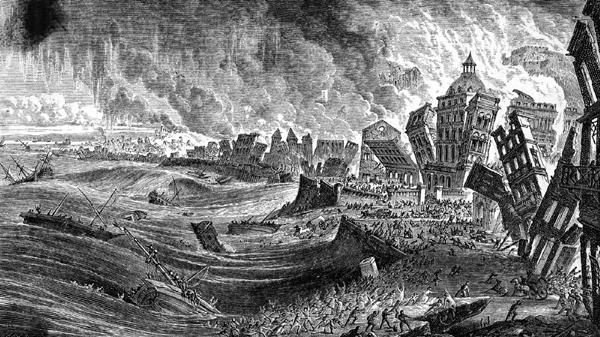Image Details

Bettman/Corbis
Six days of raging fires followed the earthquake that struck Lisbon in 1755. In this late-18th-century engraving of the disaster, buildings collapse, the ocean swells and the skies fill with smoke and flame.
A number of archaeologists have suggested that widespread burning at a destroyed site suggests that the destruction was not caused by an earthquake—at least in the days before the use of natural gas and electricity. The Lisbon earthquake, which occurred well before these energy sources became common, proves otherwise. Apparently, thatched roofs, timber from house walls and other combustible material (like cooking oil) caught fire and created this inferno.
